Data hubs and the art of building a leaner business
Find out why a data hub could be the missing piece in your business.
If you have to choose between having business data and having none, choose the data.
But having data is still not enough to gain a true advantage for your company’s operations – it must be organised, made readable, and used for taking action.
Because without organisation and action, data just sits there… and it’s useless.
This is one of the most persistent problems businesses face with any data collection system they may have – information goes in, but nothing comes out.
It’s as if there was an airport that took only landings, and had no take offs.

This is where a modern data hub can transform a stagnant data lake or idle data warehouse and transform them into runways for receiving information and launching it in a new direction.
Rather than simply creating a new storage structure, a modern data hub acts as middleware – a powerful technological tool that links data sources to a workflow, information to action, a runway that makes new possibilities fly.
Beyond Lakes and Warehouses
When data science rose in business prominence in the early 2000s, there was a focus on the collection of information to open up new insights.
Digital sensors and integrated systems allowed huge amounts of data to be gleaned from machines, processes and even people, heralding a new age where everything could be measured, quantified and known so everything could be improved.
Data lakes and data warehouses were the main way companies stored this vast amount of information collected from across their operations.
A data lake is a central point where data is stored en masse, and is typically raw data that hasn’t been harmonised to make it useful or actionable. When companies take data from the lake to structure and refine it, a data warehouse can be created that stores this highly curated information to provide a single source of truth.
Both support analytics for reporting and visualisation, with lakes acting as deep reserves of general knowledge and warehouses forming silos of specific information. But therein lies their limitations: scalability, shareability and silos. They either provide too large a picture to be truly useful, or they are too specific.
Enter data hubs, which integrate data from multiple sources (one of which can be a data lake or warehouse) to create a unified view of the information and place it into context so it can be understood and acted upon.
You Need an Efficient Data Hub to Enact Change
Whilst non functioning data hubs can fall into the same trap of creating another dead end that halts progress, an efficient data hub on the other hand acts as a connector or middleware. This enables data to link with a workflow – an optimised process that enacts positive change in the workplace.
To break that down even further, a data hub should be like an airport where planes arrive and planes depart, with information coming in from one direction and being pushed out in another.
An example of this in action is the work Silverhorse completed for Woodside at its Karratha Gas Plant to drastically improve the efficiency of corrosion inspection and refurbishment.
Using Woodside’s data lake as the primary source of information, Silverhorse deployed its AssetHive data hub that allowed new inspection and refurbishment protocols to be created using clean data, eliminating unnecessary steps and duplication to establish a faster, repeatable and more accurate inspection and refurbishment routine.
Instead of making a data hub that simply presents the information in a clear manner so that action could be taken at a later date, Silverhorse’s approach is to make the data hub part of the process of taking action – this is achieved through our unique metadata driven workflow engine.
This adds immense value to the data by creating a powerful piece of middleware with a workflow engine at its core, connecting data to actionable workflows.

Silverhorse’s workflow engine is based on a metadata model that publishes step-by-step processes and forms that allow a user to keep collecting information to add further value to the process.
Leveraging Application Programming Interfaces (API) data can then be pushed to other applications like 3D visualisation, AI, machine learning, and more. This means workflows are updated in a flexible way, all while data is used for action, making the data hub more than just a collection point for information.
Data Adds Up, But Only Action Counts
Collecting data from across a business’ operations is a powerful tool, allowing it to be organised and optimised for display to gain insights. But the true power of data is in supporting change – allowing action to take place.
A modern data hub must become a piece of middleware that links the power of data to the change of action, because true value is only found in making a direct impact on worker efficiency and productivity.
Silverhorse’s middleware-focused approach ensures that data hubs become a runway for new ideas to take shape, for siloed data stores to become connected, deeper insights to be gleaned and positive action to be taken to improve a business.
Anything else is just storage.
